-
TrackoBit
Manage commercial vehicles with the new-age Fleet Management Software
TrackoBit -
TrackoField
Streamline your scattered workforce with Field Force Management Software
TrackoField -
Features Resources
-
Blog
Carefully curated articles to update you on industrial trends. -
White Paper
Insightful papers and analysis on essential subject matters. -
Glossary
Explore an alphabetical list of relevant industry terms. -
What’s New
Get TrackoBit & TrackoField monthly updates here. -
Case Study
Explore the cases we solved with our diverse solutions. -
Comparisons
Compare platforms, features, and pricing to find your best fit.
-
About Us
Get to know TrackoBit: our team, ethos, values, and vision. -
Careers
Join the most dynamic cult of coders, creatives and changemakers. -
Tech Support
Learn about our technical support team and services in detail. -
Events
Check out the exhibitions where we left our marks and conquered. -
Contact Us
Connect with us and let us know how we can be of service.
Field Sales vs Outside Sales vs Door to Door Sales: How are They Different?
- Author:Shivani Singh
- Read Time:10 min
- Published:
- Last Update: June 3, 2025
Table of Contents
Toggle
Curious about the differences between field sales, outside sales, and door-to-door sales? Explore them in this comprehensive guide to choose the best fit for your team.
Table of Contents
Toggle
Picture this, you’ve got your first field sales rep, Malik, moving across the map to forge strong relationships with enterprise clients.
Then, there is the outside sales pro, Ajay, handling a mix of office tasks and in-person meetings to keep the sales engine running. And finally, the door-to-door salesperson, Varun, selling home security systems directly to homeowners in a local neighborhood.
Do you think which sales style they adopt, and how do their roles and responsibilities differ? This blog covers it all. Read on to discover the potential opportunities that come with these certain sales processes.
Field Sales vs Outside Sales vs Door to Door Sales: What’s the Real Difference?
Understanding the essential difference between field sales, outside sales, and door-to-door sales helps you choose the right approach for your business.
Field Sales
Field sales represent the act of selling products or services from outside of a typical office environment or from dispersed locations. It refers to allocating field sales representatives to prospects, where they interact directly with clients, gaining a deep understanding of the local market. Their primary focus is building relations through face-to-face meetings, essential for addressing clients’ needs.
Outside Sales
Outside sales is often used interchangeably with field sales but it has different features. It is operated outside the office, but at the same time, uses the office as a base for other operations. That means this process involves both in-office and field tasks, connecting customers from two different sources. Unlike field sales, outside sales is not confined to a specific geographical area but allows for a broader scope of sales opportunities.
Door-to-Door Sales
Door-to-door sales lets sales representatives physically visit homes or companies to sell products or services. This method requires engaging in persuasive and personalized conversations, answering customers’ queries, and building trust on the spot. Next time, you see someone describing the product’s potential at your doorstep, remember, it will be door-to-door sales reps.
| Let’s see how these processes play out through the roles of Malik, Ajay, and Varun.
Malik, working as a field sales executive, prefers face-to-face interactions with clients. He leaves the office to visit designated meeting spots. Over time, he became an expert in his territory and understood the local market and competition within it. This helps him build better customer relationships and sell products directly. Meanwhile, Ajay performs outside sales, beyond a specific territory. Unlike field sales representatives, Ajay is required to split his time between the office and the field. For instance, he follows up on email inquiries, works on proposals, and handles lead generation in the office. On the other hand, he attends industry conferences, meets with potential clients, and conducts product demos when he’s out. Besides, Varun, a door-to-door sales representative, starts his day with a list of neighborhoods he has to visit. He approaches each house, introduces himself to the customer, presents the product, and handles objections in real-time. Varun’s role relies heavily on his ability to form connections with people, understand their needs, and persuade them to sign up for services on the spot. |
Common Business Impacts Led by Field Sales vs Outside Sales vs Door to Door Sales
Before implementing any of these sales strategies, it is important to understand how each approach can impact your operations. Here is a breakdown of the key factors you must ensure:
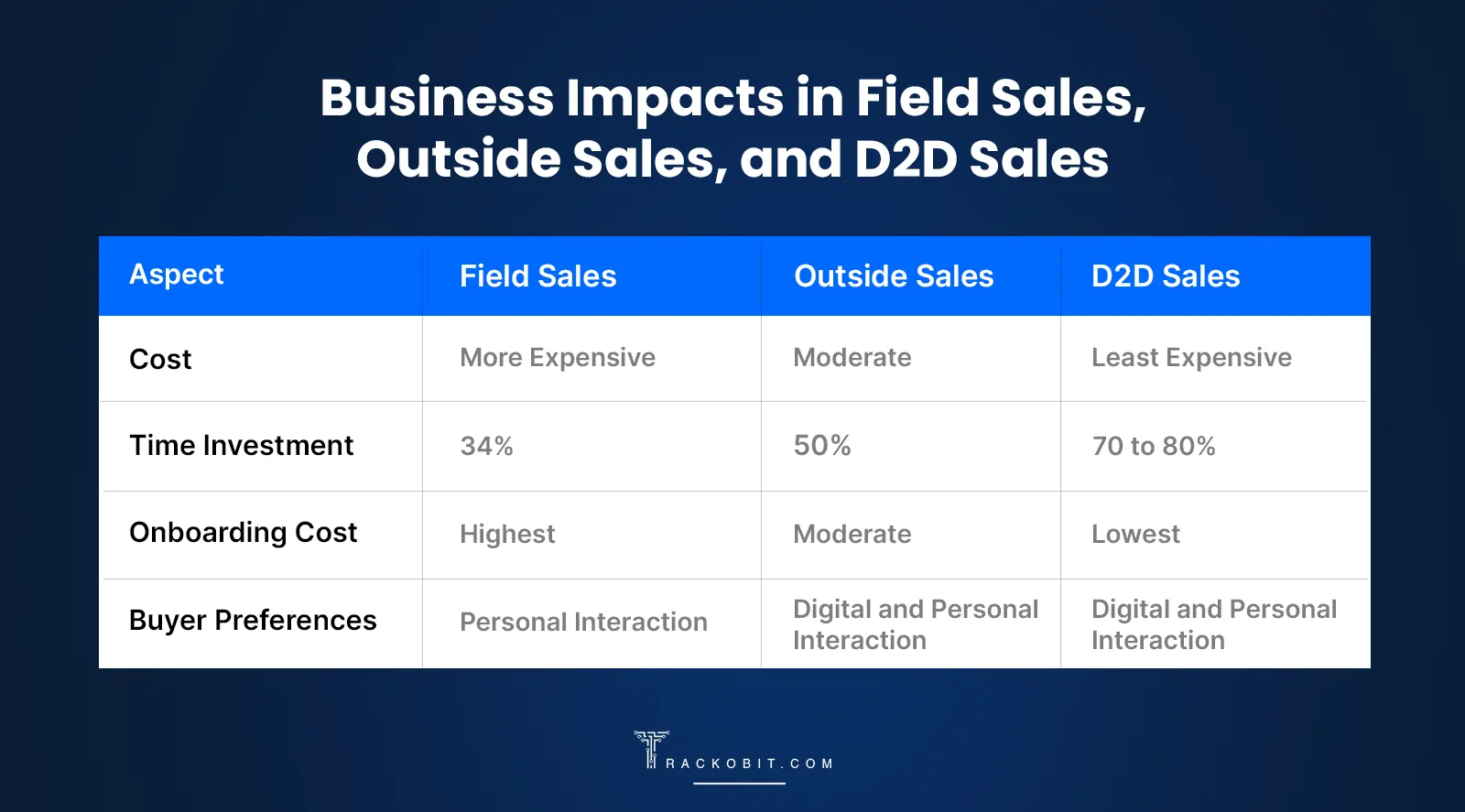
Business Impacts in Field/ Outside/ D2D Sales
1. Cost
Field Sales: Field sales can be more expensive than other processes as they typically involve traveling to dispersed task sites. Even a study by Salesforce articulates that field sales teams spend 30% of their time traveling, causing travel and meal expenses. Also, the average annual cost per field sales rep can range from $25000 to $50000, depending on their territory and company size.
Outside Sales: Costs in outside sales are generally less than field sales as the traveling time is reduced here. The representatives often work from a regional hub and central office. Therein, they spend less on travel and accommodation expenses. Moreover, the Sales Management Association found that outside sales reps spend around 20-25% of their time traveling, again leading to lower costs.
Door-to-Door Sales: Door-to-door sales have minimal travel costs as compared to the other two processes. Here, sales reps work within localized and specific areas. Additionally, they usually walk to that area, eliminating the need to travel and the cost associated with it. Even a report by the Direct Selling Association claims that the average travel cost for this process goes from $1,000 to $2000 annually.
2. Time Investment
Field Sales: Field sales processes are the least time-consuming than other processes. Harvard Business Reviews also reports that field sales reps spend 34% of their time selling. The rest of their time goes to administrative tasks and travel. But guess what? You can increase this time too by automating the sales operations with the best field sales monitoring software.
Outside Sales: Outside sales executives spend almost 50% of their time selling. Because they are already occupied with both office and on-field activities. For instance, they manage leads from the office and therein, reach the designated area to meet high potential clients.
Door-to-Door Sales: Door-to-door sales agents focus exclusively on their sales tasks. They don’t get any administrative and in-office tasks, often resulting in more efficient use of time for direct sales. This way they utilize around 70-80% of their time actively selling companies’ goods and services.
3. Training and Onboarding Costs
Field Sales: To train and upgrade their field reps, field managers require regular employee performance reviews. However, managers lack the essential data from the field to track and measure sales performance and productivity. So, they cannot recognize the training and onboarding needs. This may increase the chance of them hiring and training staff unnecessarily, ultimately leading to more costs.
Outside Sales: In outside sales, the cost of training needs is generally less intensive. The managers mostly focus on providing them with a core understanding of the product, whereas field sales require knowledge of territory management. Moreover, the cost to travel is also minimal as reps practicing this process, work from both their offices and field locations.
Door-to-Door Sales: The training and onboarding cost in door-to-door sales is less than the other two sales strategies. This process involves direct and face-to-face selling using a simple sale script. Moreover, reps don’t require extensive training on complex software or tools. They mainly rely on basic communication skills, eradicating the need to do any training on diverse markets.
4. Buyers’ Preferences
Field Sales: Ideal for b2B buyers, who appreciate personal relationships and trust building. Imagine a pharmaceutical company, looking to sell a new line of medical devices to hospitals. The company sends its field sales reps to interact with hospital administrators and understand their specific needs. These interactions allow the company to tailor their solutions accordingly. This leads hospital administrators to choose the company’s devices over others.
Outside Sales: Appropriate for buyers who value a mix of digital and personal interactions. To interact with those customers, the company usually prefers digital channels like email campaigns, webinars, and virtual product demos. Moreover, the sales reps here, visit the client’s office too to provide product demonstrations. This level of digital outreach and in-person meetings helps companies connect with their preferred buyers.
Door-to-Door Sales: This sales strategy attracts those buyers who prefer direct, immediate service, and decision-making. Personal interaction, along with the ability to clarify doubts, helps field sales representatives hit their targets. Door-to-door sales are a classic example of a B2C model, where sales reps engage directly with individual customers to offer products like kitchenware and services like lawn care.
Team Structure of Field Sales vs Outside Sales vs Door-to-Door Sales
The team structures for these sales strategies are specifically designed to maximize effectiveness and ensure success. Take a look at the image below to see how the team structures differ across these sales operations.
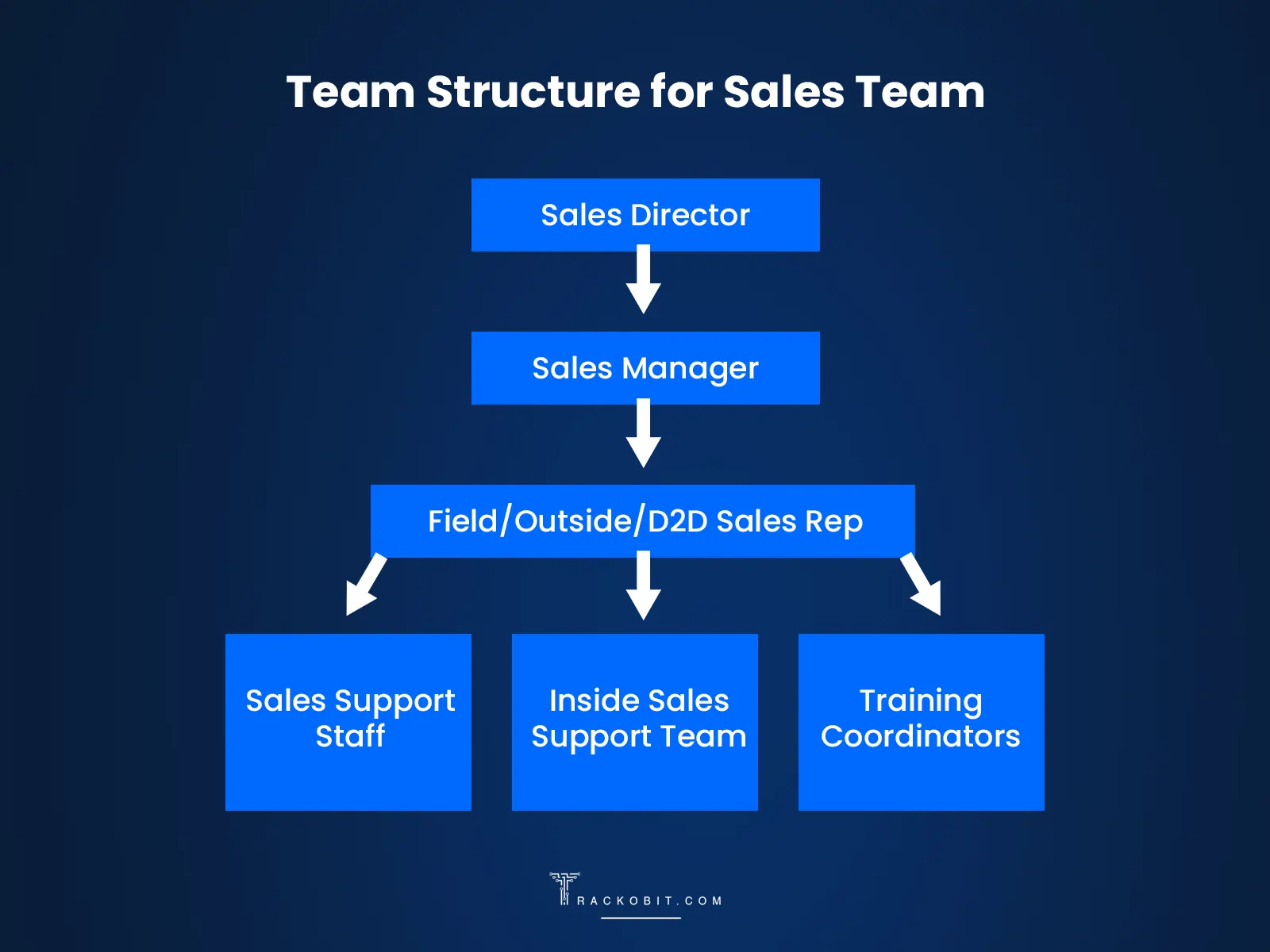
Team structure for different sales team
Now, let’s elaborate on their roles and responsibilities.
1. Sales Directors: Responsible for creating and implementing sales strategies that streamline operations and drive revenue growth across the entire business.
2. Sales Managers: Tasked with assigning sales representatives to specific territories, ensuring that they are on the right track to meet their targets. Moreover, they guide to optimize performance with the help of sales management software.
3. Sales Reps (Field, Outside, and Door to Door sales): Engage with prospects throughout the sales process, understand their needs, and convert leads into customers. Each type of rep has different working patterns but shares the common goal of building relationships and closing deals.
4. Sales Support Staff: Essential to the smooth operation of sales teams, they handle tasks such as managing customer data, preparing sales materials, generating reports, etc. Their support allows reps to focus on selling and client engagement.
Common Tools Used in Field Sales, Outside Sales, and Door-to-Door Sales
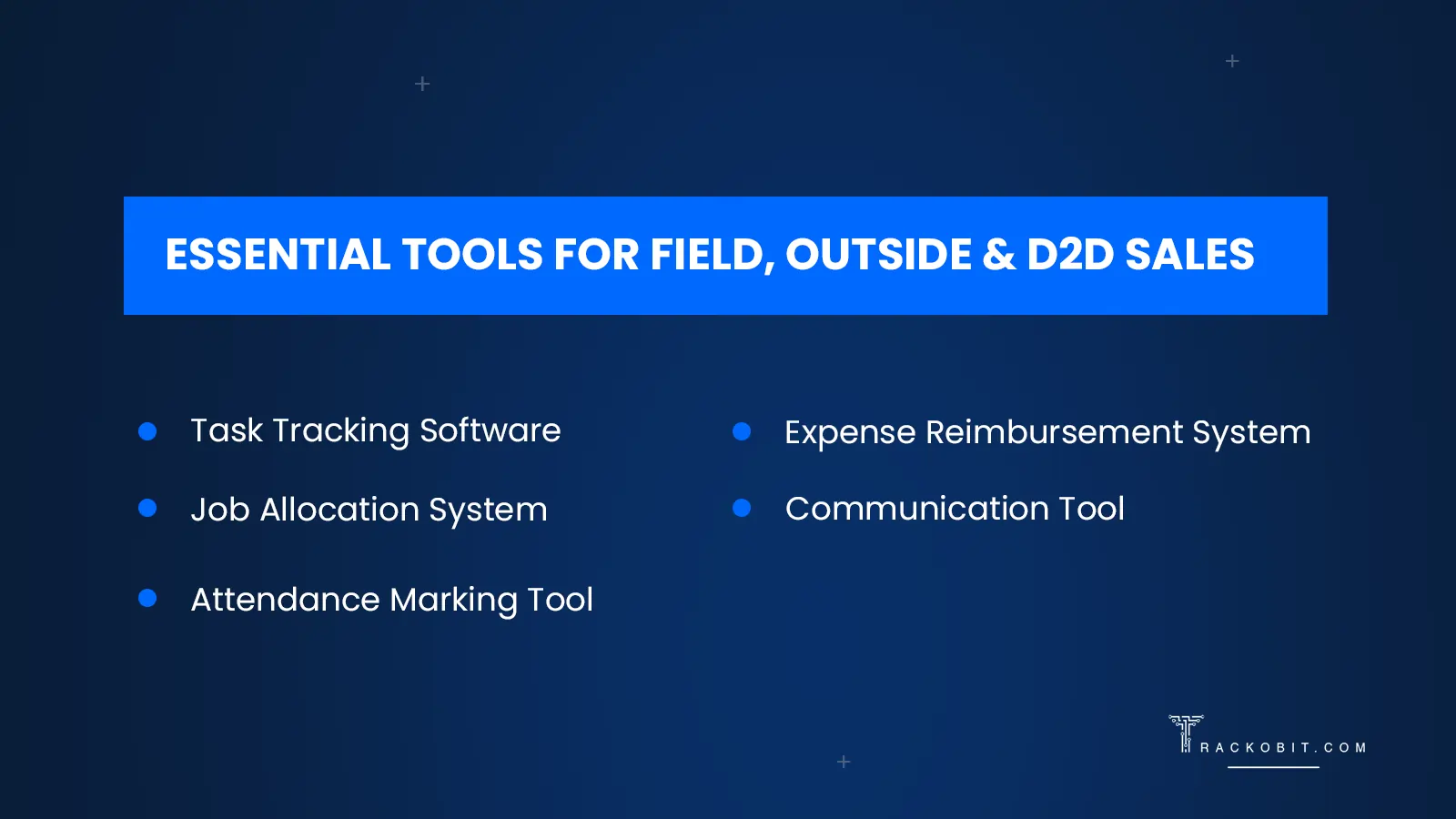
Tools for all sales processes
Since all three sales processes involve sales representatives tracking outside the office, managers must rely on specific tools and software to optimize their operations. Below are essential tools that help serve this purpose.
1. Task Tracking Software
Task tracking software solutions enable sales managers to ensure sales performance tracking on the field. Solutions like TrackoField offer target vs. achievement reports, providing clear insights into completed tasks versus those assigned. With these reports, managers can identify training needs and onboarding requirements.
For instance, if a rep underperforms, you can pinpoint the issue and implement targeted training programs. Additionally, if staffing levels are inadequate, you can onboard more employees to meet the recruiting needs sufficiently.
2. Job Allocation System
A job allocation system is essential for managers aiming to streamline the task allocation among sales reps efficiently. This system offers pre-built scheduling templates, allowing managers to simply input employee job details. These schedules provide a clear overview of where sales reps should be assigned, ensuring that all territories are covered.
Additionally, it allows for optimal distribution of tasks, helping to maintain productivity and avoid overlaps. As sales managers don’t invest their time building the scheduling templates from scratch, this system again helps in better time management.
3. Attendance Marking Tool
Sales reps across different sales processes often waste valuable time marking attendance at the office instead of demonstrating products to clients. To eliminate this inefficiency, software like TrackoField offers remote attendance marking.
With features like geocoded check-ins location-based facial recognition, and biometric app logins, this system ensures fast and reliable attendance tracking. All these features capture geocoordinates and timestamps of the place from where attendance gets marked. Thus, bringing the accuracy you need and freeing up more time and energy for relevant sales activities.
4. Expense Reimbursement System
Traveling cost comes in almost all of these sales operations. In order to track and assess the vitality of traveling expenses, it is important to invest in expense management software. The software not only records and tracks employees’ travel-related expenses but also streamlines the process of submitting and approving expense claims.
Moreover, it lets you generate reports on expenses incurred to better manage and forecast the budget for field sales operations. When you have this system in place, you can evaluate the cost-effectiveness of different sales strategies, thus improving your overall operations.
5. Communication Tools
Getting real-time updates regarding tasks is important to facilitate the seamless interaction between sales teams and clients. Tools such as instant messaging and voice note sharing ensure a smooth collaboration with other team members and departments, allowing for quick resolution of issues.
Well, guess what? You will get both types of tools in one dynamic platform, TrackoField, where sales reps have all the necessary information at their fingertips shared by their managers. Even the tool has a voice note feature, letting reps just simply record your voices, mitigating the time consumed while typing.
How TrackoField Can Help You Manage All Types of Sales Operations
TrackoField offers a robust suite of tools designed to streamline and enhance your sales operations across all types of sales environments– field sales vs outside sales vs. door-to-door sales.
| For field sales, TrackoField has comprehensive tools, letting you track tasks, manage attendance, and process reimbursement seamlessly. It even comes with its field sales representative apps, helping team members stay organized, adhere to their schedules, and record their attendance instantly. To enhance communication all across the organization, the software has chat and voice recording features. Upon using this feature, reps can ask task-related queries, all while on the move.
For outside sales teams, TrackoField simplifies and automates all administrative tasks, reducing the workload and allowing reps to focus on driving sales. Moreover, the software lets you easily track sales progress via metrics like target vs. achievement reports. This metric allows you to assess how well sales targets are being met by comparing actual performance against goals. This is how TrackoField provides a clear view of sales progress vs. achievement, letting you identify areas for improvement and making informed decisions. For door-to-door sales representatives, TrackoField ensures essential tools that let them mark their attendance online, manage their daily tasks, and claim expenses smoothly. It also integrates GPS tracking to ensure reps are adhering to their assigned territories. Additionally, the software solution provides in-built schedule templates, mitigating the need for you to create templates from scratch and simplifying the planning process. All these features collectively enhance productivity, streamline workflow management, and ensure that reps focus on engaging with customers. |
Upon signing up for TrackoField, you gain access to some user-friendly tools designed to make your sales teams more efficient and successful. Learn more by signing up to use the software for free.
A Comparison Chart of Field Sales vs Outside Sales vs Door-to-Door Sales
This comparison chart will provide a detailed insight into what we have learned about the different types of sales operations, highlighting their unique characteristics, challenges, tools, and success metrics.
| Aspect | Field Sales | Outside Sales | Door-to-door Sales |
| Definition | Selling products/services outside a traditional office setting within a designated territory or client site. | Working in an office or field to streamline sales processes without being confined to a specific area. | Selling products/services to customers by visiting their homes or businesses. |
| Key Characteristics | Territory-based job allocation | Combines office and field tasks | Direct customer interaction |
| Challenges | Requires deep local knowledge | Balancing administration and field tasks | Higher rejection rate |
| Tools Needed | Field sales monitoring software
Field sales mobile apps |
Lead generation software
CRM system |
Sales script
Mobile payment systems |
| Success Metric | Target vs. achievement report
Client retention rates |
Lead conversion rate
Event and demo success |
Number of successful sales per day
Customer satisfaction |
| Example | Pharmaceutical Real estate | Manufacturing | Direct-to-consumer products |
Conclusion!
Whether you’re navigating the bustling streets for door-to-door sales, managing the dynamic realm of field sales, or orchestrating outside sales strategies, having the right software is crucial to your success.
As we have explored the key differences between–field sales vs. outside sales vs. door-to-door sales, it’s clear that the right tool can significantly enhance your sales journey. With TrackoField, you can spend less time wrestling with paperwork and more time making connections and closing deals. So why juggle multiple tools when you can have a single, powerful ally?
Embrace the right sales strategy with TrackoField and accelerate your sales operations to newer heights. With TrackoField, hitting your targets is not just achievable– it’s enjoyable!
FAQs About Field Sales vs. Outside Sales vs. Door to Door Sales
-
What is better: Field sales, outside sales, or door-to-door sales?
Each one of these sales strategies has its pros and cons. Field sales is good for companies with 100+ sales representatives, assigned to different territories to assess consumers’ needs and preferences. Outside sales work ideally when you manage both in-office and on-the-field activities. Door-to-door sales, in contrast, are effective when you want to provide direct and personalized experiences to clients.
-
What are the common solutions and tools used in the field, outside, and door-to-door sales?
Some common tools and software solutions used for sales performance tracking and monitoring in field, outside, and door-to-door sales are task tracking systems, job allocation tools, attendance marking solutions, expense reimbursement systems, etc.
-
How much do field, outside, and door-to-door sales reps make?
According to Glassdoor, the estimated total pay for a door-to-door sales rep is ₹83,831 per month. The average salary for an outside sales rep is ₹65,000 per month and for field sales reps is ₹43,247 per month. There can be an additional payment of ₹24,000 per month for field sales executives which can include commission tips, profit sharing, and cash bonus.
Shivani is a Content Specialist working for TrackoField. She comes with years of experience writing, editing and reviewing content for software products. Her underlining expertise in SaaS especially H... Read More
Related Blogs
-
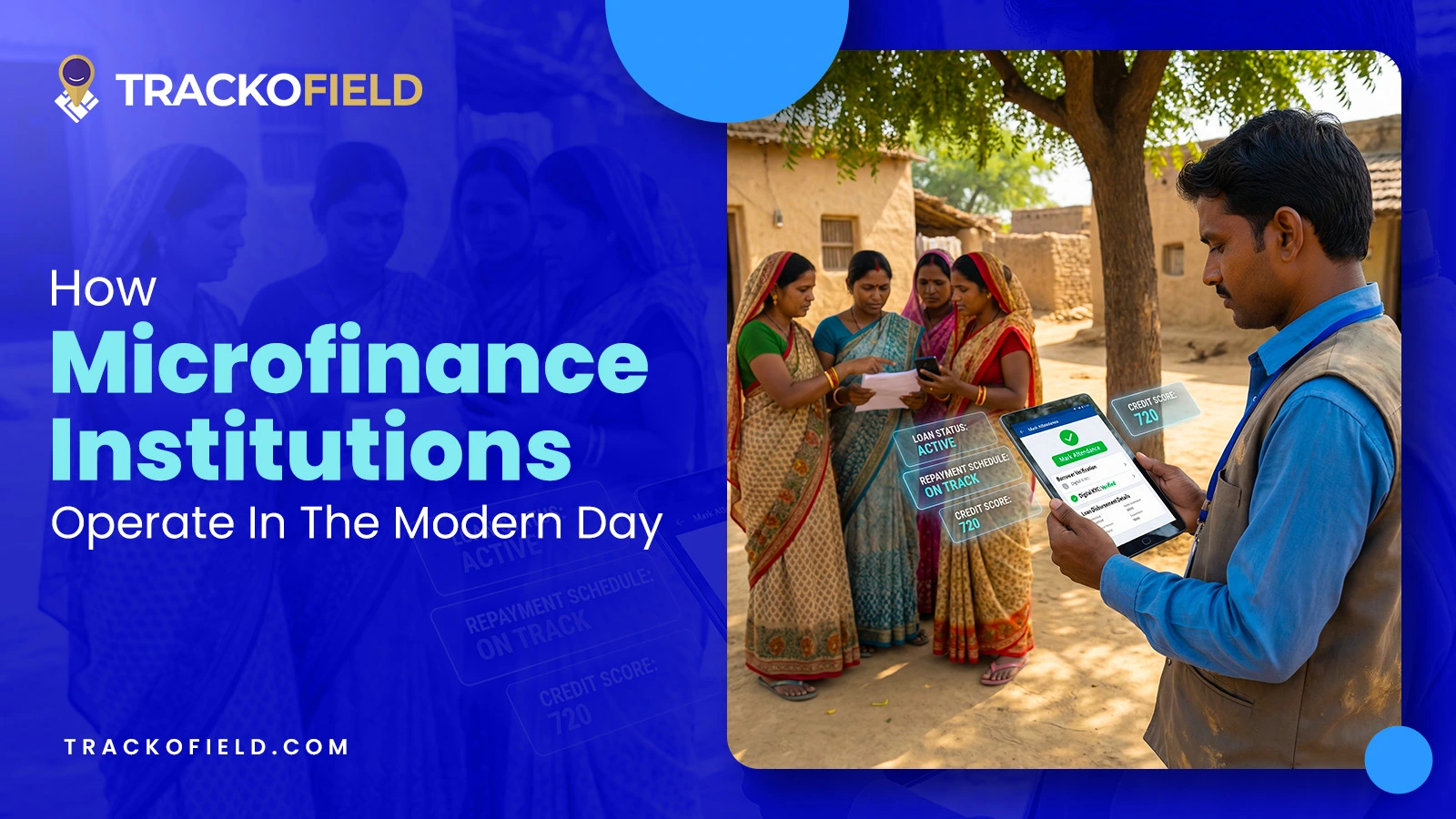
How MFIs Are Working In Modern Day Scenario? A Complete Breakdown
Mudit Chhikara December 30, 2025How field force automation is helping MFIs transform field operations.
-

Unified Field Workforce Dashboard: Monitor Tasks, Attendance & More In One Place
Mudit Chhikara December 15, 2025Bring full clarity to field operations with a single, real-time field workforce dashboard.
-
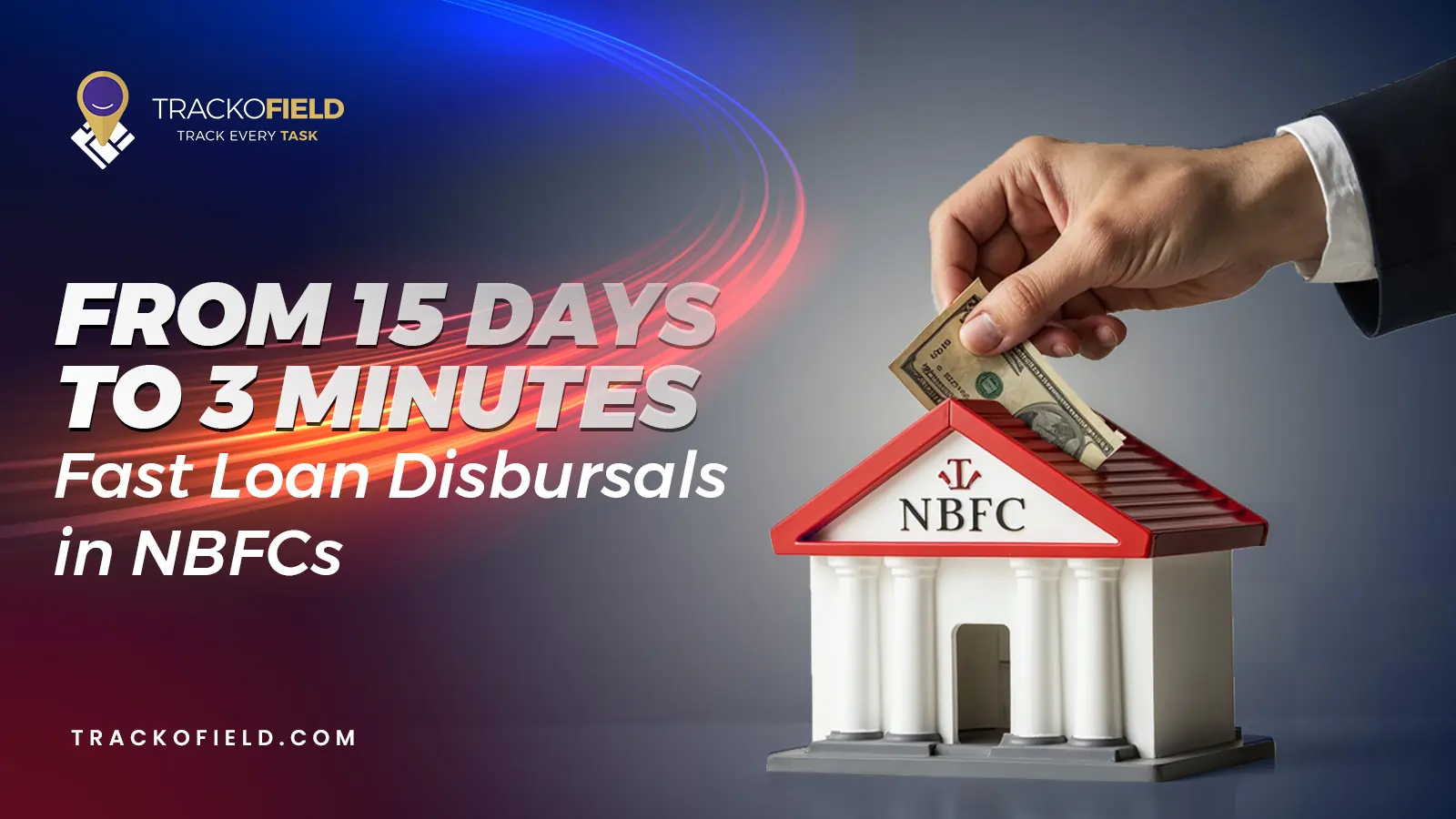
Loan Disbursement in NBFCs: From 15 Days to 3 Minutes – Learn How
Shemanti Ghosh December 11, 2025TrackoField’s AI-enabled field force automation software speeds up loan disbursals in NBFC with field agent task monitoring and facial attendance…
-

AI Facial Recognition Attendance: A Game-Changer for Fraud-Free Field Operations
Mudit Chhikara December 9, 2025Ensure transparent attendance and eliminate fraud before it even starts with AI facial recognition and geofencing.

Subscribe for weekly strategies to boost field team productivity.
Your inbox awaits a welcome email. Stay tuned for the latest blog updates & expert insights.
"While you're here, dive into some more reads or grab quick bites from our social platforms!"Stay Updated on tech, telematics and mobility. Don't miss out on the latest in the industry.
We use cookies to enhance and personalize your browsing experience. By continuing to use our website, you agree to our Privacy Policy.


































